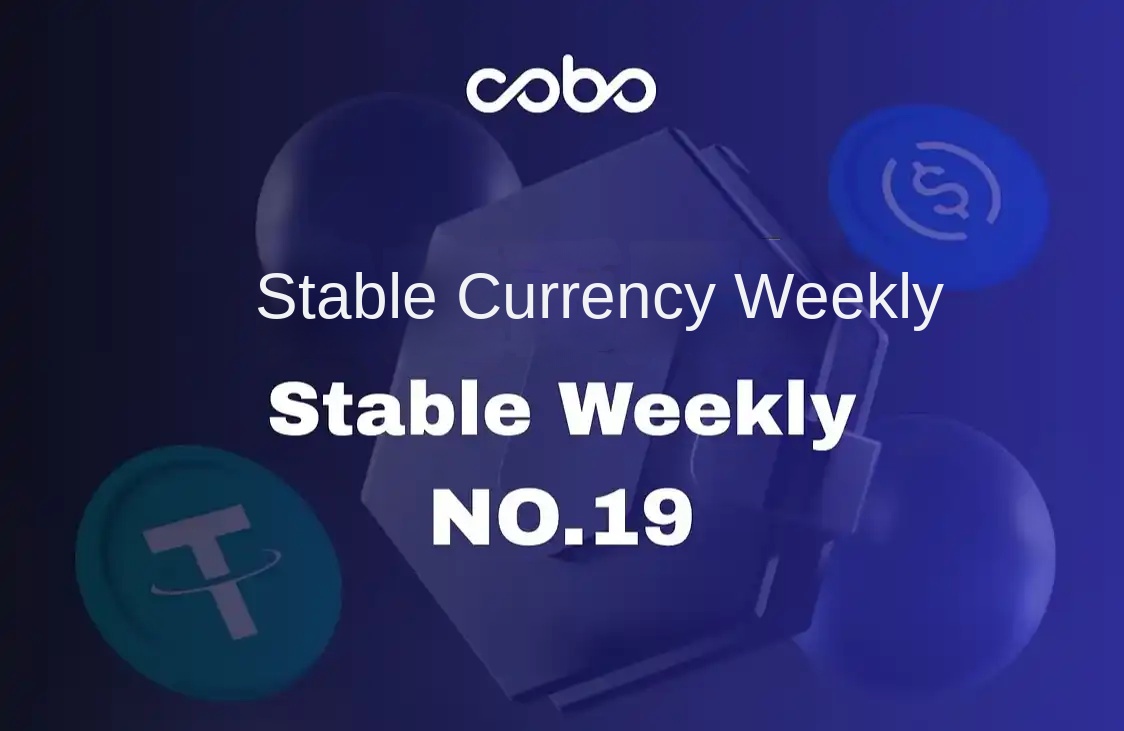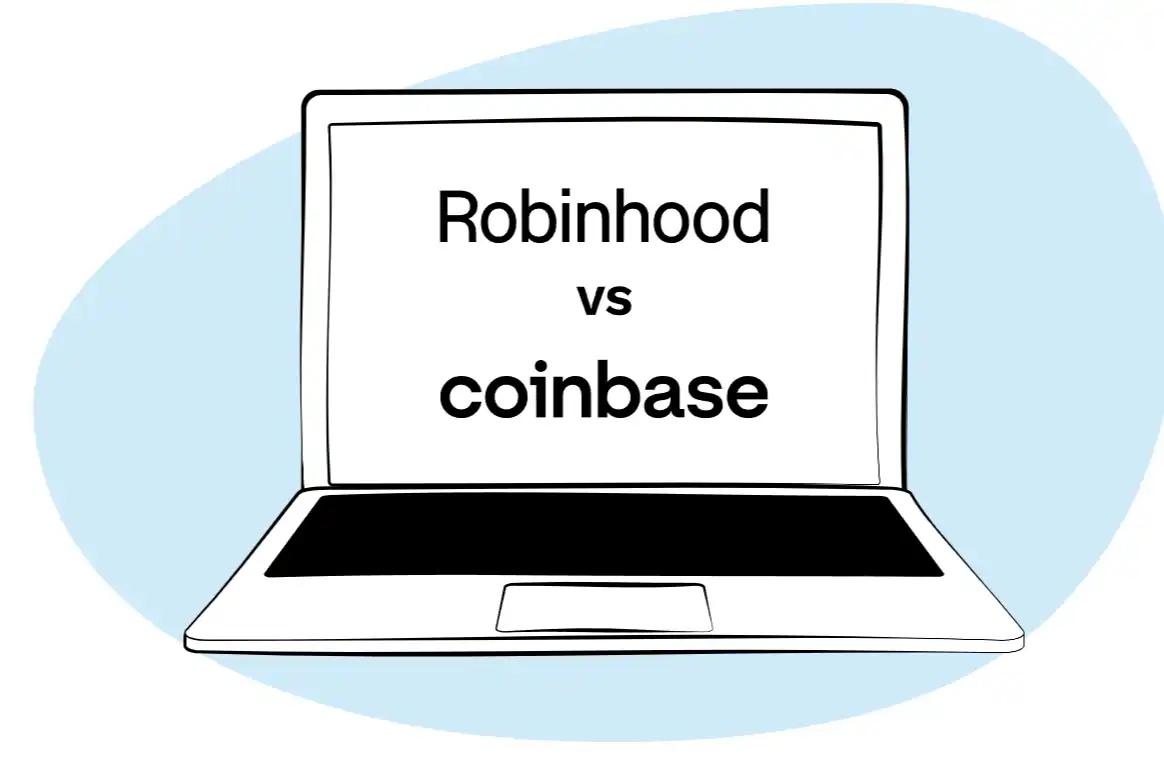Valuation Methodology for Utility Tokens: Analysis Framework Based on the Quantity Theory of Money
Original Article Title: "Valuation Method of Utility Tokens — Analysis Framework Based on the Monetary Trilemma"
Original Article Authors: Jessica Feng, Investment Manager of Hash Global BNB Fund, James (KK) Shen, Founder of Hash
CZ (Binance Founder):
"I'm not good with valuation models, but Hash Global's previous estimates have been accurate. The value composition of a token should have many aspects. If such a concise formula can capture all value propositions, that would be impressive. Market prices often deviate from fundamentals, sometimes too high, sometimes too low. Binance will continue to build and establish the fundamental value of BNB, while market prices will be evaluated by experts like Hash Global."
Li Xinquan (Co-founder of Fosun Group):
"I have collaborated with the Hash Global team for many years. One aspect I appreciate about the team is that although their investments may have occasional mistakes, their decisions are based on rational analysis rather than blind faith. They engaged with me early on regarding the Binance ecosystem and the value of BNB. I also participated early in their staking and BNB fund investments, with good returns. For Bitcoin and Ethereum, I have read many institutional analysis reports; regarding BNB, I believe Hash Global's analysis is the earliest and best in the industry."
Chen Long (Secretary-General of Luohan Hall, Founder of Wei Xi, former Chief Strategic Officer of Ant Group):
"While Web3 is increasingly becoming a new pillar of the financial system, there is a lack of consensus on how to value digital assets. Hash Global has proposed a very valuable perspective on this based on the Monetary Trilemma analysis framework.
If a country's currency growth rate is synchronized with economic growth, it will not cause inflation. This is the well-known seigniorage revenue. This means that economic transaction activities require the lubrication of currency functionality. With a stable currency velocity, the overall value of the currency will synchronize with the volume of economic transactions.
It is based on this principle that the Monetary Trilemma analysis framework can estimate the total value of ecosystem tokens around transaction volume. While this method is based on many assumptions, its logic is based on fundamentals, making it a significant advancement compared to the valuation logic of most digital assets, and it is worth exploring and improving continuously. Applying first principles thinking to value creation is a good starting point."
Wang Jingbo (Founder of Noah Wealth):
「As the world's largest wealth management platform serving the global Chinese community, Noah has always focused on the emergence and value of new types of assets. The United States and Hong Kong, among other places, are vigorously promoting the improvement of the regulatory framework for digital assets, and we have observed that digital assets are being accepted by the mainstream market. We attach great importance to guiding and helping investors to learn and understand the value of digital assets as soon as possible. Over the past two years, we have invited the Hash Global team multiple times to share their insights with our investors. Their research and analysis on 'Value Functional Tokens' have brought us many fresh perspectives and insights. Their attitude and approach are worthy of attention and emulation.」
Wei Zhijie (Director of KGI International Wealth Management):
「Having worked in the wealth management industry for many years, I have been assisting various family offices in intergenerational inheritance and asset allocation. KGI has noticed the optimization effect of risk and return ratio that digital assets bring to portfolio allocation and is guiding clients to rationally understand and accelerate the allocation of digital assets. We are particularly interested in functional tokens that have clear economic models and real-world use cases. The innovative research conducted by Hash Global in this area of new assets has inspired us a lot, and we are engaging with them to jointly explore the value of these assets, thus advancing investors in the traditional financial field in their understanding of the value of these assets.」
1. Quotation
In recent years, the rapid development of Web3 financial infrastructure is reshaping the operating rules of the capital markets, and its programmability and openness are also restructuring the source of asset value, driving the emergence of a new form of asset. These new types of assets not only carry the traditional equity value, namely as a value mapping of platforms, protocols, or ecosystems; but also have a clear utility value, such as payment of transaction fees, service discounts, access permissions, etc. This report collectively refers to these new types of assets as 'Value Functional Tokens,' referring to composite asset carriers that embody both 'asset attributes' and 'usage rights.'
The emergence of new assets is driving the evolution of the concept of 'value' itself, and the valuation methods of value investors must evolve accordingly, just as the Internet stock valuation logic brought about a new logic in the early 21st century. John Pfeffer, an early advocate of crypto asset value investment, proposed: 'The first principle of value investment is to think independently based on a reliable valuation logic. When new types of assets first appear, there is no corresponding valuation logic; value investors should strive to discover a new valuation logic.'
We believe that the most representative Value Functional Token currently is the platform token of the world's largest cryptocurrency exchange, Binance—BNB. BNB reflects platform value on one hand, and on the other hand, it has practical utility value within the ecosystem, serving as an early and most mature example of this asset class. As early as 2017, Binance completed the tokenomics design of BNB, pioneering the definition of Value Functional Tokens as an asset category. In 2019, following the first principle of value investment, we proposed a valuation framework based on the monetarist equation (MV = PQ) using BNB as a template to evaluate the value generation logic of BNB and Value Functional Tokens.
Over the past six years, we have released five reports and received numerous inquiries and feedback from investors and institutions. We have continuously optimized our model, which has also received preliminary validation from the market. We have now organized this framework as follows, hoping to assist asset management institutions, investors, industry researchers, and project parties in analyzing and making decisions when evaluating investments in utility tokens, pricing assets, and designing tokenomics.
Web3 distributed ledger technology has already and will permanently change the foundation of the capital markets. A more efficient and transparent Web3 financial system will undoubtedly become the core of the future financial infrastructure. With the continuous improvement of the global cryptocurrency regulatory framework, such as the recent U.S. enactment of the "Crypto Assets Market Structure Clarity Act" and the successive introduction of stablecoin legislation in the U.S. and Hong Kong, we believe that we will see a wave of utility tokens represented by BNB, similar to Tesla issuing new "stocks." These utility tokens will be issued on the Ethereum or Binance chain, not only representing "equity value" but also allowing for charging discounts using ecosystem tokens at charging stations. We look forward to utility tokens becoming the primary form of asset representation in future capital markets!
II. Definition and Characteristics of Utility Tokens
The Utility Token defined in this report refers to a type of cryptographic asset that simultaneously possesses the following two categories of value foundation:
1. Asset Attribute / Equity-like Attribute: Represents the value mapping of a particular platform, protocol, or ecosystem. Its value is usually driven by macro factors such as ecosystem size, user growth, transaction activity, similar to company equity.
2. Function Attribute / Currency-like Attribute: Performs practical functions in specific use cases, such as paying transaction fees, gas fees, staking, participating in governance, exchange services, or enjoying platform benefits. For this type of asset, the report chooses to build a valuation model based on Monetary Velocity Equation (MV = PQ), mainly considering the following two points:
Firstly, although utility tokens have certain "equity-like" characteristics, their asset attributes still differ from traditional securities. Taking BNB as an example, this token does not represent any form of equity or cash flow right in Binance. From the perspective of ecosystem development, the Binance founding team has bound the interests of all ecosystem participants (shareholders, management, users, and other ecosystem participants) together since the inception of the project, placing the ecosystem value growth on the ecosystem's unique token BNB, achieving the spirit of Web3's ecosystem co-construction and sharing. Since 2021, Binance has further adjusted the mechanism for burning BNB from a "profit-linked buyback and burn" to an "automatic burn based on on-chain transaction volume," proactively severing the direct link between token value and platform financial performance to mitigate securities risks.
In 2025, the U.S. issued the CLARITY Act, further distinguishing between "Digital Goods" and "Security Tokens." Under this regulatory direction, we believe that future value-functional tokens will lean towards the design of "Digital Goods." Although they derive value from traditional equity, they are designed to avoid the standards of an "Investment Contract" and the Howey Test for security tokens. Therefore, such tokens do not possess the legal characteristics of traditional equity assets; in valuation methodology, they cannot be directly evaluated using cash flow-based enterprise valuation models.
On the other hand, the value of utility tokens mainly comes from their actual utility within the ecosystem. They undertake functions such as payments, Gas, staking, token launches, governance participation, etc., essentially acting as a circulating currency within the platform's economy. Their value is influenced by factors such as ecosystem economic activity scale, token usage frequency, and supply adjustment mechanisms. Thus, compared to security valuation methods, a monetary approach is more suitable for capturing the "currency-like" attributes of these tokens and integrating multiple sources of value into a unified logical system.
In conclusion, the core advantage of using a monetary approach to value utility tokens is that this model provides a structured, quantifiable, and adaptable analytical framework that can comprehensively cover all sources of value for such tokens.
Three, Valuation Model Establishment
This methodology combines the Monetary Approach (MV = PQ) with Discounted Cash Flow (DCF) to construct a systematic valuation model suitable for valuing utility tokens:
MV = PQ: Used to construct the structural logic framework for token value generation
+
DCF: Discounted sum of the "monetary appreciation" brought by future ecosystem expansion, converted into the token's current theoretical price
3.1 Monetary Approach (MV = PQ) Overview
The Quantity Theory of Money was proposed by the economist Irving Fisher and is a classic theory that explains the relationship between the total amount of money and economic activity. In it:
• M: Money Supply
• V: Velocity of Money
• P: Price Level
• Q: Quantity of transactions or total output
In traditional macroeconomics, MV represents the total money demand, and PQ represents nominal economic output, both of which should remain consistent in a long-term equilibrium state.
We believe that for functional tokens with practical use cases in the on-chain ecosystem, their economic role is highly similar to that of a "native currency" within the ecosystem. Their value mainly comes from ecosystem expansion and changes in token supply-demand structure, aligning closely with monetary theory. This model is particularly suitable for tokens with the following characteristics:
1. Serving as a primary means of exchange within the ecosystem (e.g., fees, Gas, etc.);
2. Having a transparent issuance system, deflationary design or locking mechanism affecting effective circulation;
3. Their value primarily based on ecosystem activity development.
3.2 Structure Modeling Based on Monetary Theory
Under the MV = PQ framework, a token's theoretical value is primarily driven by two paths:
• PQ: The total economic value of the ecosystem
• M × V: Represents token supply and its circulation rate
Any variable affecting token value (such as the number of users, transaction volume, burn mechanism, etc.) ultimately influences token price through its impact on PQ or M × V.
Here, V (circulation rate) is a technical challenge in modeling. Due to the lack of directly observable data, actual valuation often assumes that the initial market price reflects a rational equilibrium state, then uses known PQ and M to reverse V, assuming that the circulation rate will remain stable in the future or moderately increase or decrease.

Theoretical Price Derivation:
Unlike fiat currencies, ecosystem token prices are usually denominated in US dollars. Therefore, in the model, the total circulating supply of the token (M) can be divided into:

The ecosystem's total value (PQ) divided by the token's circulation and circulation rate is the token's theoretical price. This formula is the basis of this model's valuation.
3.3 Introducing Discounted Cash Flow (DCF) for Quantitative Valuation
The monetary theory provides a logical framework for the token's value generation mechanism but does not directly output prices. Building on this, we further introduce the Discounted Cash Flow (DCF) method. By predicting ecosystem's total economic growth, combining changes in token supply and circulation rate, estimating the annual incremental value per token, and discounting and summing future values, we arrive at a theoretical valuation. This process can also be understood as the present value calculation of "currency appreciation."
The specific steps are as follows:

IV. Valuation Case Study: Taking BNB as an Example
To demonstrate the applicability of this valuation method in practice, we take BNB as an example and apply our proposed “MV = PQ Superimposed DCF” model to conduct a quantitative valuation analysis.
4.1 BNB as a Utility Value Token, the Monetary Route is the Best Valuation Model
BNB is the core value carrier of the Binance ecosystem (Binance Exchange + BNB Chain) and has dual-value sources:
1. Asset Attribute/Equity Attribute: BNB’s economic model integrates the value creation logic of traditional finance. Similar to how US stocks enhance shareholder equity through share buybacks, BNB continuously reduces its circulating supply through a quarterly burn mechanism, creating a long-term deflationary trend on the supply side, providing stable support for the coin price. However, unlike traditional equity, BNB’s burn mechanism is not linked to platform profits but is anchored in its supply-demand relationship within the ecosystem. Therefore, BNB is not strictly a equity asset but rather has an “equity-like” attribute—reducing BNB’s actual circulation through burn to build a value mapping relationship between BNB and the Binance ecosystem.
2. Functional Attribute/Currency-like Attribute: BNB has multiple use cases within the Binance exchange and public chain ecosystem, including being used for fee payment within the exchange, participating in token sales, serving as Gas Fee in the chain ecosystem, participating in governance, etc. BNB has essentially become the “circulating currency” in the entire ecosystem, and its value depends on changes in the ecosystem’s economic scale and the token's supply-demand relationship within the ecosystem.
In conclusion, as an ecosystem's circulating currency, BNB's value mainly depends on the currency’s supply-demand relationship (MV) and the ecosystem’s economic value (PQ). Therefore, the monetary route can fully capture BNB’s core value drivers and is the best valuation model.
4.2 BNB Valuation Calculation
The analysis will revolve around the following three core steps:
1. Define and forecast key variables PQ, M₀, V
2. Calculate the token's annual value increment ΔPt
3. Use discounted cash flow method to discount and sum the future incremental value
1. Define and Forecast Key Variables: PQ, M₀, V
GDP of the Ecosystem PQ
The Binance ecosystem mainly consists of the Binance Exchange and the BNB Chain. Therefore, PQ is the total value of economic activities primarily driven by BNB in these two parts, including:
1. Proportion of BNB-paid fees in Binance centralized exchange (CEX) spot and derivatives trading fee revenue (transaction volume × fee rate × proportion paid in BNB (assuming 50%));
2. BNB Chain Gas Fees (total on-chain Gas revenue).
In the calculation, assuming the ecosystem's annual growth rate is as follows, the future annual nominal GDP of the ecosystem, PQt, is summarized:
• 2025–2027: 25%, 15%, 10% respectively;
• From 2028 onwards: Long-term stable growth rate of 3%.
Total Circulating Supply M₀
According to the Binance whitepaper and on-chain data, the initial total supply of BNB is 200 million tokens. Deducting team-locked holdings (approximately 80 million tokens) and historical cumulative burn (approximately 11.65 million tokens), the current theoretical circulating supply is approximately 108 million tokens. Considering Binance's current burn mechanism and future burn projections, it is expected that the circulation will remain at this level from 2025 to 2027 and will gradually transition to a stable level of 100 million tokens in the long term. This is the maximum supply available for secondary market trading without considering ecosystem usage.
Based on this, further excluding the four major ecosystem locked scenarios (fee payment, node staking, financial products, long-term value holding), the actual circulating supply M₀t is obtained.
Circulation Velocity V
The circulation velocity of BNB is difficult to measure directly. We use a reverse calculation method: using the 2024 actual market price, PQ, and M₀, the baseline value of V is derived as 0.57. For future years, a range of ±10% can be set, and its impact on valuation can be validated in subsequent sensitivity analyses.
2. Calculate Annual Value Increment ΔPt
Using the formula from the previous section: 
We calculate the annual incremental ecosystem value, divide it by the actual circulation scale of BNB for that year, and consider the circulation velocity to obtain the theoretical value increment per token per year.
Based on actual data from 2024, assuming growth rates of 25%, 15%, 10%, and long-term 3% over the next three years:

3. Sum of Discounted Values: Calculating Theoretical Valuation
Using a 10% discount rate, each year's value increment ΔPt is discounted to obtain the present value of all future "monetary appreciation":

4.3 Hash Global Past Four-Period Report - BNB Target Price Achievement Schedule

Five, Conclusion
This report takes BNB as a case study, proposes the concept of a "value-functional token" as an asset class, and constructs a systematic valuation framework based on the currency's path. We hope that this framework can provide reference and inspiration for project tokenomics design, investor valuation, and researchers' model assessments.
As the Web3 industry is still in a rapidly evolving stage, we will continue to update models and research findings. We welcome investment institutions, researchers, and developers to discuss and provide feedback on the report content.
If you need to get updates on the report, details on the model, or engage in further discussions, please visit our official website or contact team members. We look forward to receiving your feedback and suggestions:
• Official Website: www.hashglobal.io
• Authors' Twitter: @longwinsk, @Jf4172
• Contact Email: contact@hashglobal.net
Disclaimer
This report is intended for information sharing and does not constitute any investment advice, nor should it be construed as a guarantee of future market performance. This report is based on Hash Global's independent research and public data compilation, and we have made every effort to ensure the accuracy and completeness of the data and analysis. However, we do not make any commitment or guarantee regarding the final results or applicability of the viewpoints. Investing in cryptocurrency assets carries a high degree of uncertainty and volatility. Readers should fully understand the relevant risks and take full responsibility before making any investment decisions. Hash Global and its staff are not liable for any direct or indirect losses caused by the use of the content of this report. As of the publication date of this report, Hash Global and its managed funds hold some BNB assets, and the related analysis and viewpoints may be influenced by the holdings. We will continue to monitor relevant assets based on market dynamics and update research content as necessary.
This article is a guest contribution and does not represent the views of BlockBeats.
Welcome to join the official BlockBeats community:
Telegram Subscription Group: https://t.me/theblockbeats
Telegram Discussion Group: https://t.me/BlockBeats_App
Official Twitter Account: https://twitter.com/BlockBeatsAsia
 Forum
Forum

 Finance
Finance
 Specials
Specials
 On-chain Eco
On-chain Eco
 Entry
Entry
 Podcasts
Podcasts
 Activities
Activities
 OPRR
OPRR








